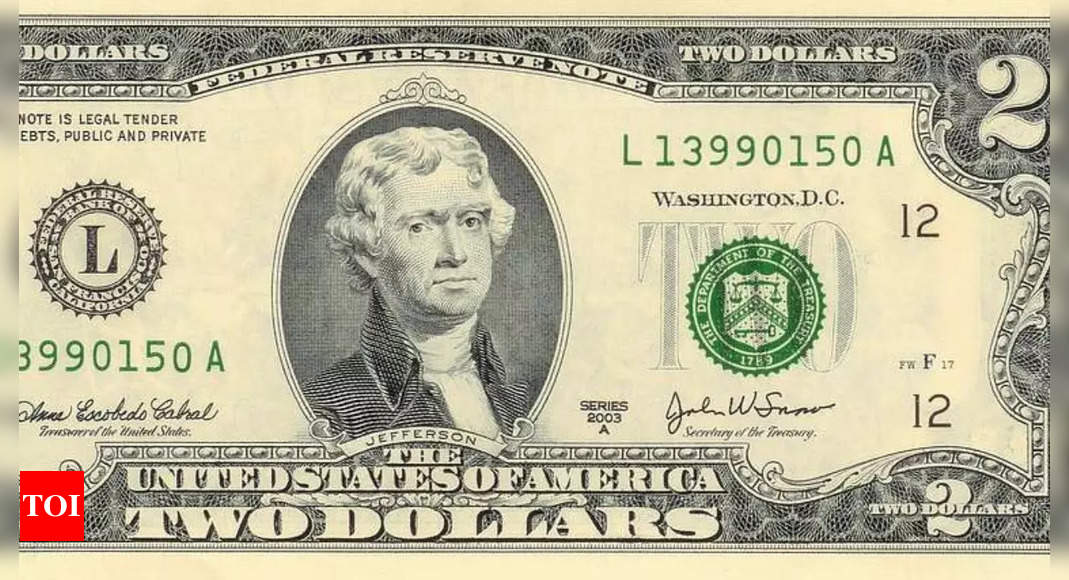Now Reading: Is Your $2 Bill a Hidden Treasure? Here’s How to Check Its Value
-
01
Is Your $2 Bill a Hidden Treasure? Here’s How to Check Its Value
Is Your $2 Bill a Hidden Treasure? Here’s How to Check Its Value

Rapid Summary
- Certain editions of $2 bills in the U.S. can be worth hundreds or even thousands of dollars due to factors such as rarity, condition, and unique serial numbers.
- Notable examples include a 2003 $2 bill sold for $4,000 in 2022 after initially fetching $2,400 at auction.
- The $2 bill was first introduced in 1862 with Alexander Hamilton featured on it; Thomas Jefferson replaced Hamilton in 1869 and remains the figure on modern versions.
- Design updates have been made six times since its introduction; the reverse currently features an image of the signing of the Declaration of Independence.
- Despite its continued circulation (approx. $3 billion worth in use as of 2022), superstitions and past associations with activities like voter bribery have contributed to its rarity in daily transactions.
- Factors affecting value:
– Notes with red, brown, or blue seals from between 1862-1917 might potentially be worth up to $1,000+ based on condition.- Uncirculated bills from rare print years like 1890 can fetch up to $4,500.
– Recent bills (2000s onward) are typically close to face value unless they belong to high-demand categories like specific notes from 2003.
– A complete set of uncirculated notes from certain years (e.g.,1995) packaged together can hold increased collector value ($500+).
- Collectors interested should consult auction resources such as U.S Currency Auctions.
Indian Opinion Analysis
While this story centers around a niche aspect of U.S. currency collectibles-specifically valuable historical and rare denominations-it draws attention more widely toward growing interest globally around rare artifacts and collectibles across markets like India to .

























